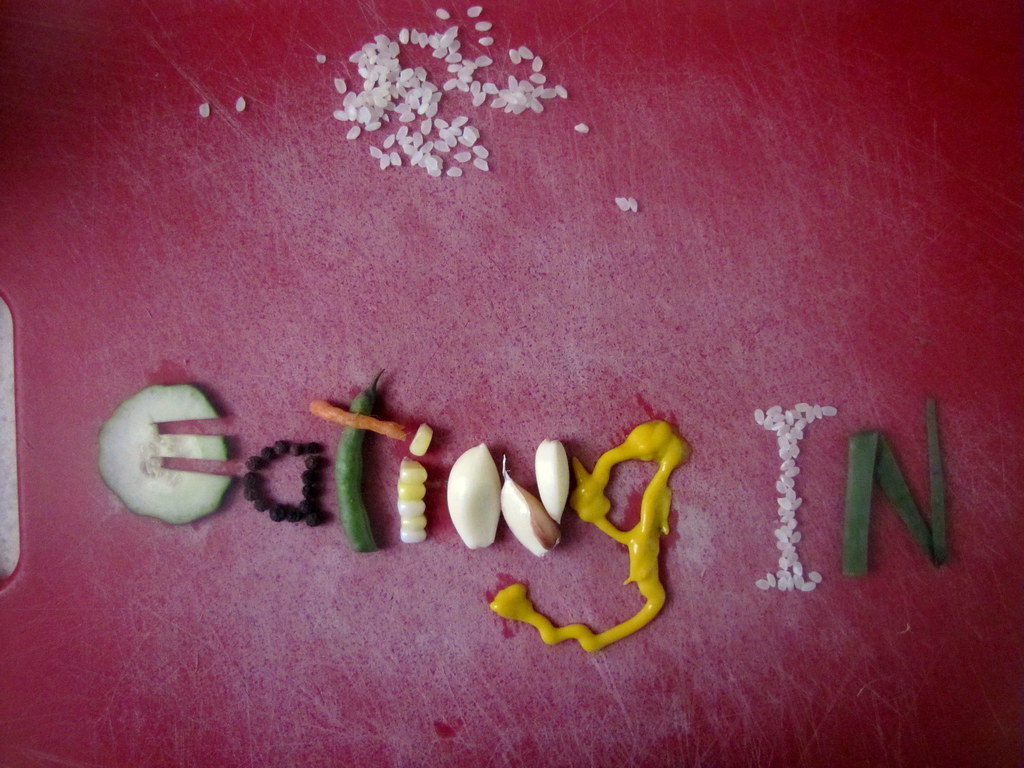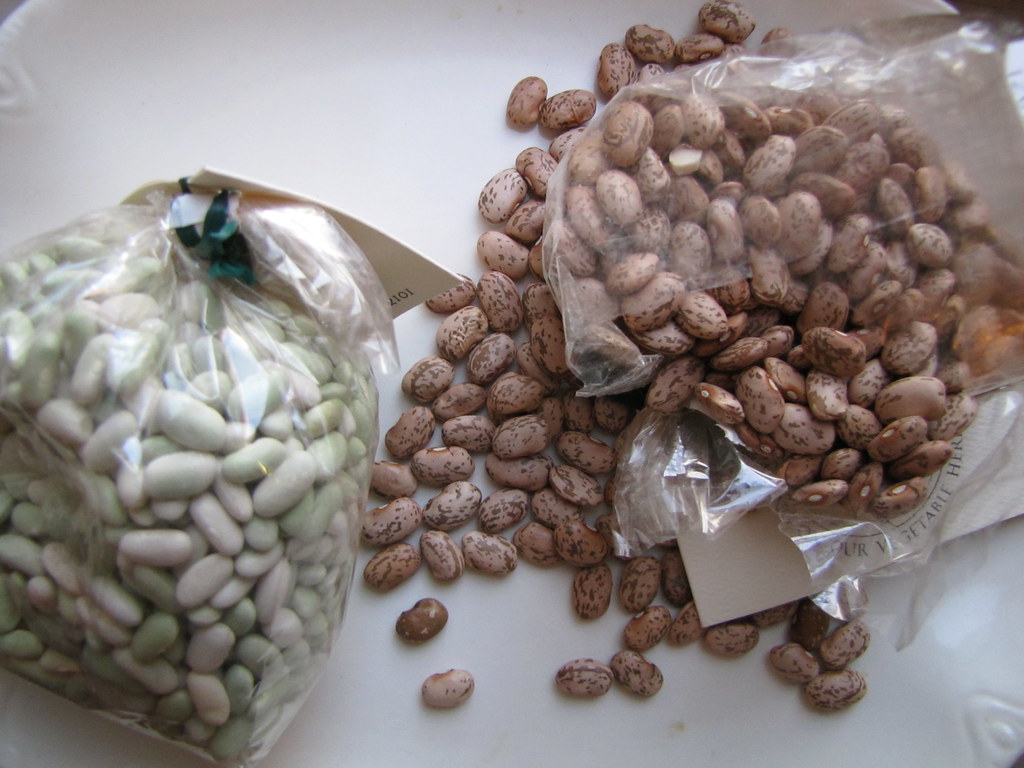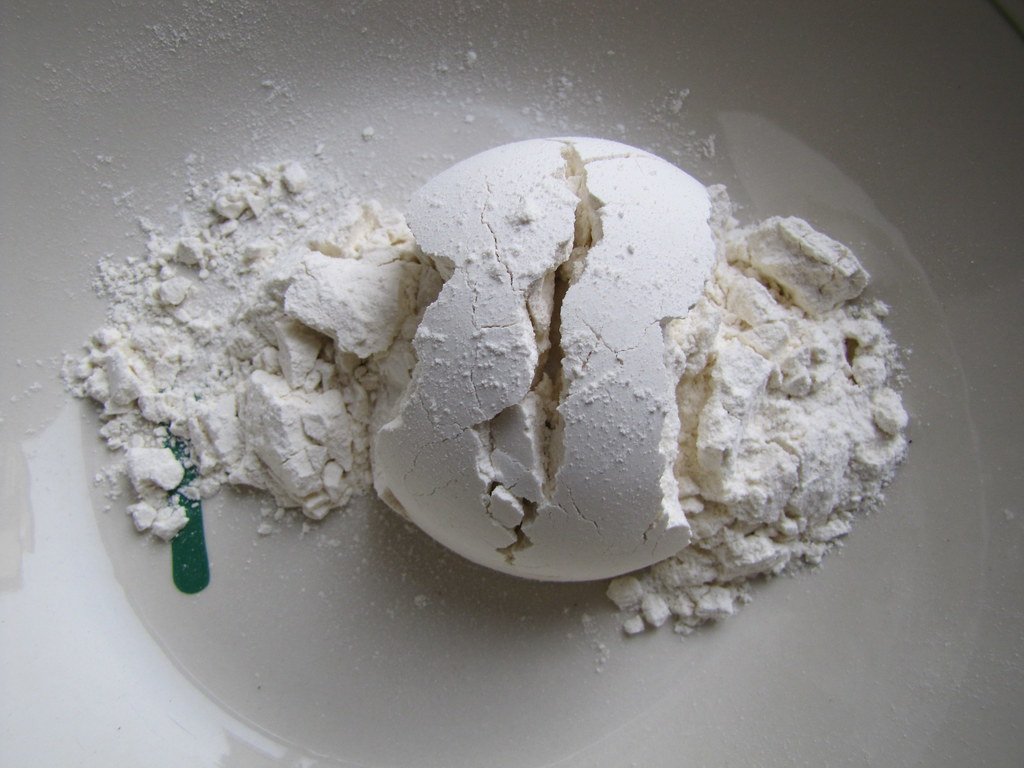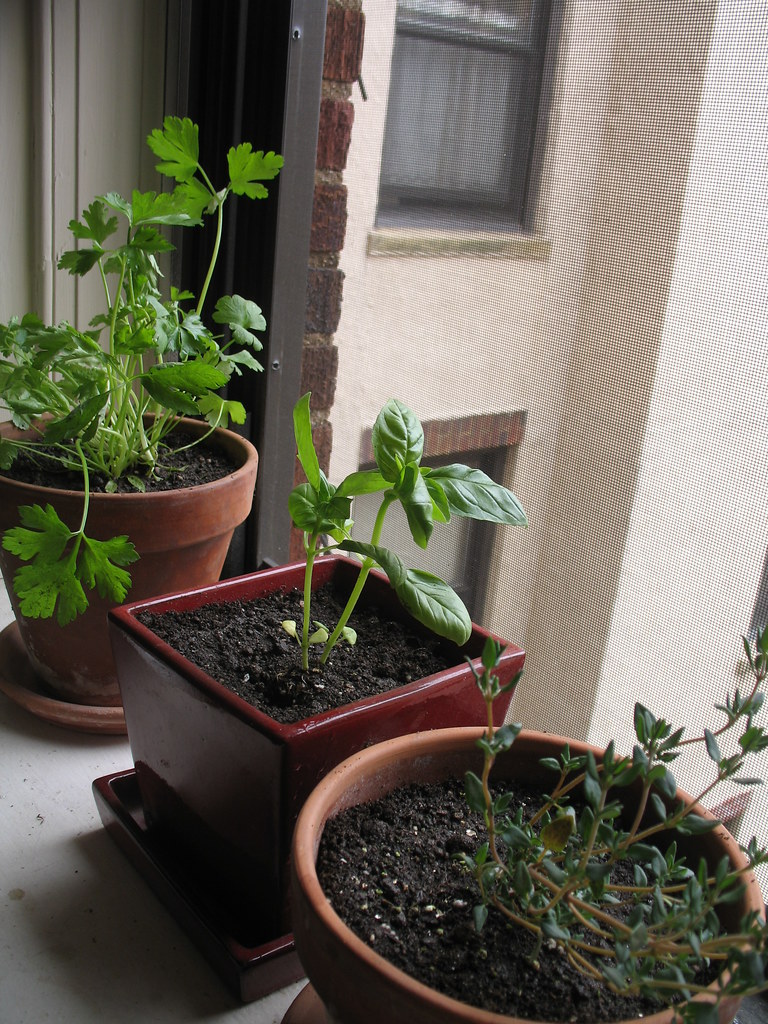
The Week of Eating In is upon us! Cooks, budgeters, eco-foodies, and anyone looking to join in on this one for the fun, grab your utensils and get ready to not eat out (wherever you are) all week! Last week I listed some essential cookware I couldn’t live without; this time, it’s all about the food. Here’s a list of basic pantry and refrigerator staples to stock up one, the kinds that’ll keep giving, and giving. It’s a minimal list and keep in mind to adapt some items to your own liking (pick one favorite dried bean and call it a day). And I hope that even if you’re not gung-ho about cooking for a week straight, you’ll find something useful to your cooking routine, too.
But first, a quick update on the Huffington Post Green challenge. I’m writing this while making an enormous pot of soup, roasting two trays full of root vegetables, and letting two loaves of bread rise next to the radiator in preparation for this week of eating in. I hope that should set me up well (it should be a busy one for me besides). Check out what our other intrepid bloggers are up to at their own sites, and look out for several more food luminaries who are joining the challenge and will be guest blogging on The Huffington Post, like Food52‘s Amanda and Merrill, and Small Planet Institute co-founder Anna Lappé. In total, more than 1,500 people have signed up for the Week of Eating In.
And with that, back to the kitchen!

Rice or other dried grains (like oats, barley or cornmeal)
Get a sack of grains, and be fed for a lifetime. Well, not really, but if you keep replenishing said grains, you should be set. This shouldn’t be too hard especially if you like mixing it up a bit. So if you find cooking rice to be your kitchen nemesis for whatever reason, try something easier or quicker, like quinoa, or couscous instead. Whole grains are even healthier for you, so make a mental note of those. My go-to grain for the past year and still going strong has been Thai Jasmine brown rice.

Eggs
They’re incredible, they’re edible, and in too many ways to be listed here. Make an omelet for dinner with a couple and leftover vegetables, or pancakes both savory or sweet with just one. Whatever you do with them, keep a carton in your refrigerator (and preferably a cage-free, more rich and nutritional one). If they’ve been there really long, you can check freshness by shaking an egg raw: if you can hear the yolk bobbing about, the white liquid instead of firm, then it’s no longer very fresh. Cheap and filling, they’re one of the ultimate plebian proteins around.
Garlic
Garlic is one of nature’s gifts in small packages: it packs a lot of flavor per tiny clove — plus, it comes wrapped in beautiful paper. This also keeps it fresh at room temperature, so it’ll never need to crowd your fridge like most fresh produce. No wonder that most cuisines around the world employ garlic profusely. So unless you’re a Trannsylvanian, you’ll probably need it in your cooking, too.

Dry beans
It’s about time we canned the canned bean and vegetable habit. If you’re crunched for time, the sodium-drenched legumes will do fine, but a bag of dry beans is much, much more economical, healthier and earth-friendly than all of those cans. And we’re already talking about one of the most economical, healthy and earth-friendly proteins there is (beans). Get into the habit of soaking a pot of beans overnight just one day of the week. Bring them to a boil and soften it with water for maybe an hour afterward (depending on how large your beans are), or pop it in the fridge if you can’t get to it right away. When you have a big batch of softened beans like this in your fridge, it’s extra incentive to stay in and do something with them. Bean salad, minestrone, huevos rancheros? Anything goes.

Extra-virgin olive oil
It doesn’t do all of your cooking — deep-frying requires an oil with a higher smoking point — but extra-virgin olive oil adds flavor as it cooks. It’s great for salads (skip bottled dressing, just a drizzle of good olive oil alone can suffice), and is a heart-healthier replacement for butter in many pan-frying applications. Because that “good” olive oil can be pricey, and because all olive oil loses flavor when it’s heated anyway, some friends of mine like having two bottles always on hand: one of the swank stuff to use minimally for finishing touches, and one decent or cheap bottle for cooking. Whichever kind, you don’t necessarily want to get a huge gallon to last you a year; over time, oil loses flavor, too. Which is why I love this refillable bottle from a nearby shop BKLYN Larder, which taps their house imported olive oil from an oxidization-free keg, and their bottles are tinted brown to keep light from letting the oil go stale, too.

Flour
Even if you’re not big on baking, you’re bound to need flour from time to time. When searing meat or seafood, a thin coat creates an easy golden crust. A spoonful with melted butter makes the base for bechamel, and from there a number of other classic French sauces. And so on. Some will say that bleached flour is better for some purposes, like making pastry or cake since it’s so refined, but if you want to avoid chemical additives in your food like the bleach that’s used to make bleached flour whiter, and if you want a better nutritional toll, then go unbleached all the way. Here’s a good summary of the comparison.
Homemade stock
Roasted chicken carcass leftover from Sunday’s dinner? Toss it into a pot, and let it simmer an hour or two. Same for bones of any kind, and for onion, carrot and celery, and X-number of other flavorful additions (like cheap root veggies turnips and parnsips). If vegetable stock is what you’re aiming for, just the latter of that equation will turn out a pretty good, golden broth. Making stock should hardly cost you a thing, which is one reason why it’s so great to have on hand. But homemade stock is also free of additives, preservatives or MSG like the canned kinds, and it makes your home smell really cozy when it cooks. Just whenever you find yourself with the time, or the spare parts for it, make some and keep it in the freezer. Time to stock up on stock!

Fresh herbs as a houseplant
This is an easy and fun way to kill two birds with the same stone: never have to pay for bunches of fresh herbs that wilt within one week, and adorn your home with something fragrant and fetching. Grow some fresh herbs at home, even in the winter (rosemary is a hardy winter herb), by putting a few of your favorite types in planters by the windowsill, or wherever sunny. It’ll be hands-down the freshest herbs you can add to your plant, since it’s only a few feet away from the stove (well, in my small apartment), and it really makes so much more sense to take small snips at a time rather than have to buy expensive and highly perishable heapings and figure out what to do with the rest of the bunch before it goes bad.
12 Responses
Angela
Sign me up! (Though I’m in Dallas) I’ll be eating in all week as well. I’m glad you reminded me I need to stock up on some rice and beans in my pantry as well.
Monday linkage | Brokelyn
[…] coming to some routes [NY Times] Pantry essentials for eating in [Not Eating out in NY] Why bar music is always too loud [Gothamist] Project Runway hits Nintendo […]
kim
I always have dried chickpeas in my pantry, also chili peppers, nuts, and of course, rice. 20 lbs of it. 🙂
pantrydiaries.com
I have some great, easy recipes for beans on my web site. Lentils are also a great staple to have on hand.
Joanne
Love this post! As someone who eats in every day almost every week, I totally agree with all of these items. The only thing I might add is a box of pasta…but that’s just cause I’m a serious pasta addict.
Chunky Chef
I’m blogging about eating in week, too. Tomorrow my friend is coming over for lunch and we’re having bean salad, zucchini soup, brussel sprouts and cornbread.
Check out blog tribute to eating in week:
http://chunkychef.blogspot.com/2010/02/eating-in-challenge.html
Thanks for the inspiration!
Kate
I agree with Lentils being essential to eating in, along with flour, pasta, butter, oil, well, my list would be about 20 items and I have them all right now!
The comment about wine seems spot on. Trader Joe’s wine store is a great source of bargains. Green wines of various countries for under $5, Bordeauxs for under $15 that are actually GOOD, a couple of great Italian grapes for $5 to $10 and many more. Even one or two of the “two buck Chucks” (really $2.99) are good. Saveur recently featured the Merlot and the South Australian Chardonay very California (if you like French, steer clear).
Audrey
Though they are not always the most local or seasonal, I find it difficult to get by in my kitchen without a few lemons or limes. A squeeze of juice in dressings and sauces, over fish, or whatever, make for a tangy boost in your dish. Nor can I live without a bunch of giant cans of tomatoes, diced or whole.
cara_mia
King Arthur Flour now sells an unbleached cake flourn – so you can get the best of both worlds, highly refined but no bleach.
Kendall Clibon
Substantially, the article is really the greatest on this deserving topic. I fit in with your conclusions and will thirstily look forward to your upcoming updates. Just saying thanks will not just be sufficient, for the wonderful lucidity in your writing. I will directly grab your rss feed to stay abreast of any updates. Good work and much success in your business dealings!
cerita ngentot
cerita ngentot…
[…]Essential Arsenal For Eating In: Pantry Staples » Not Eating Out in New York[…]…
Link!
work around them and surpass them. you…
will see how you can make your articles stand out. the other part of your research should include finding the latest, more relevant information for your articles. i cannot stress this enough, provide great content!#2 do your best writingsecond, do your…